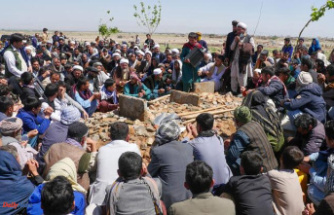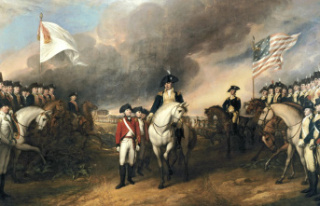The gate to the Auschwitz concentration camp not only stands for one of the greatest crimes in human history, it also shows the cynical world view. "Work sets you free" is written there in heavy iron letters, framed in a wrought-iron arch. Between 1940 and 1945, 1.1 million to 1.5 million people died in the camp, most of them Jews. The phrase "work sets you free" has become a symbol of this.
But if you look closely, you will discover an irregularity. The letter B in the word "work" looks different than usual, it is upside down: the small bulge at the top, the large one at the bottom. What looks like a small technical error was in fact an act of resistance by a camp inmate, who can still be recognized today by all visitors to the former concentration camp.
Jan Liwacz was the man who made the infamous lettering and is also responsible for the upside down B. Liwacz was born in 1898 in the small Polish town of Dukla. In 1939 he was arrested by the Nazis and held in various prisons until, in 1940, he was one of the first prisoners to be deported to the then new Auschwitz concentration camp.
Liwacz was a metalworker by trade – and as such he repeatedly had to do blacksmith work for the SS guards in the camp. Among other things, he was also commissioned to forge the lettering "Work sets you free". Commander Rudolf Höß had arranged for the entrance gate to be decorated with this phrase. The saying was also used in other concentration camps.
To do this, Liwacz bent two gas pipes and welded the letters between them – including the upside down B. The camp administration and the SS guards probably didn’t even notice this, otherwise the prisoner would probably have had to endure drastic consequences again. Only after the war did other concentration camp inmates report that Liwacz had used the letters the wrong way around. With this, the Pole probably wanted to set a (albeit small) sign of resistance, also a symbol of hope and the will to live in this hostile environment.
Because nothing is further from the conditions in the Auschwitz concentration camp than the sentence "work makes you free". In the camp, the inmates were forced to do hard physical labor, but never with the prospect of being able to "free" themselves from their suffering. Unlike in a conventional labor camp, the prisoners did not serve a "penalty" and they did not have the option of being released if they "performed well". Many prisoners died of exhaustion, disease and starvation.
Jan Liwacz survived the Holocaust: at the end of 1944 he was transferred to the Mauthausen concentration camp and liberated by US soldiers shortly before the end of the war. After the war he returned to Poland and worked again as a blacksmith. He died in 1980 at the age of 81. In 2009, the entrance gate with the inscription he forged was stolen, but was quickly found and restored.
His inverted B is still the first thing visitors to the Auschwitz Memorial see - and continues to be a symbol of the resistance against: Since 2010, the International Auschwitz Committee has awarded a sculpture in this form to personalities "who, according to the thoughts of the survivors of Auschwitz 'Never Again!' act". Previous winners include Frank-Walter Steinmeier and Angela Merkel.
Sources: "New Germany" / Ines Rensinghoff: "Auschwitz Main Camp - The gate work sets you free" / International Auschwitz Committee












